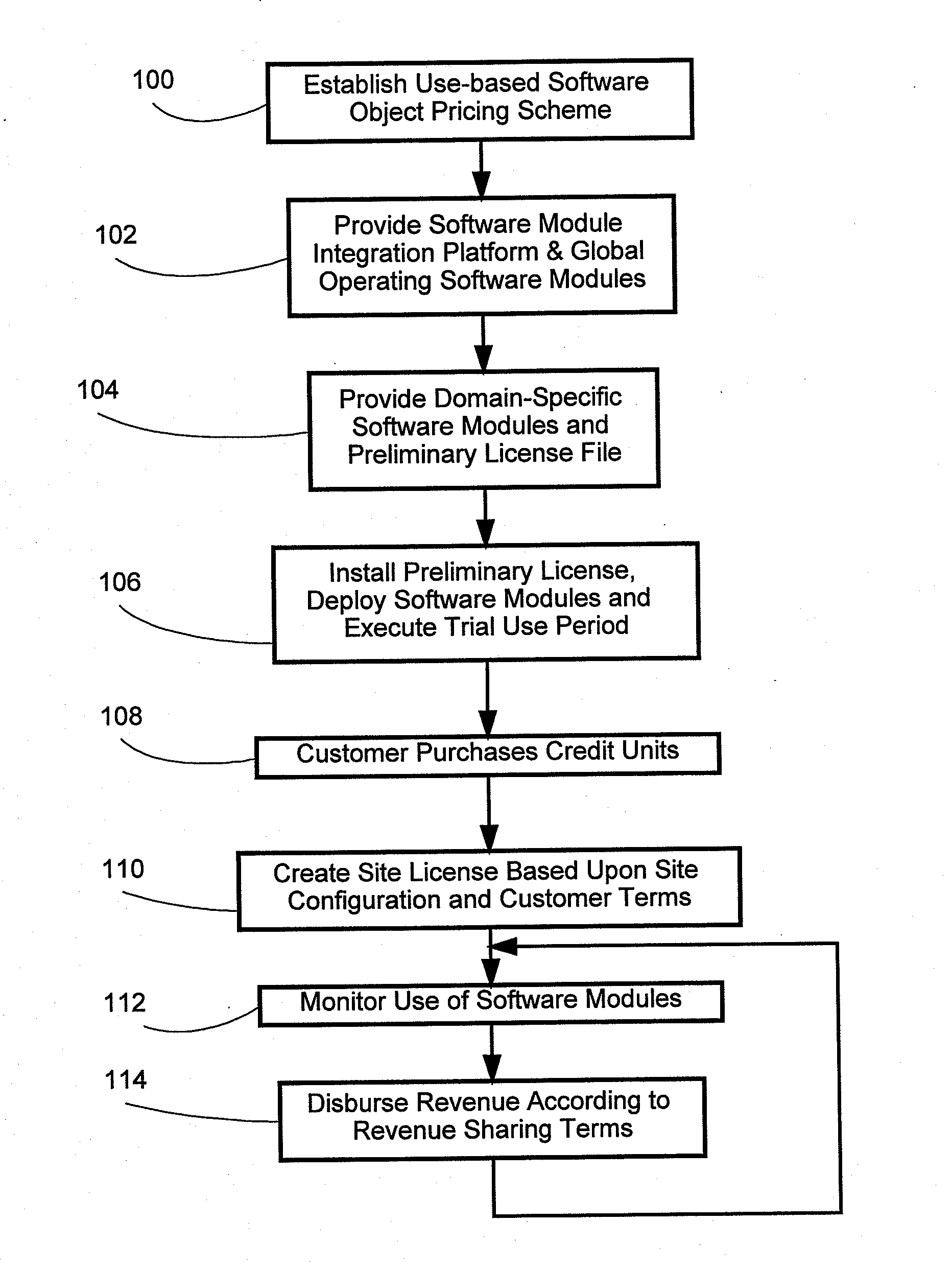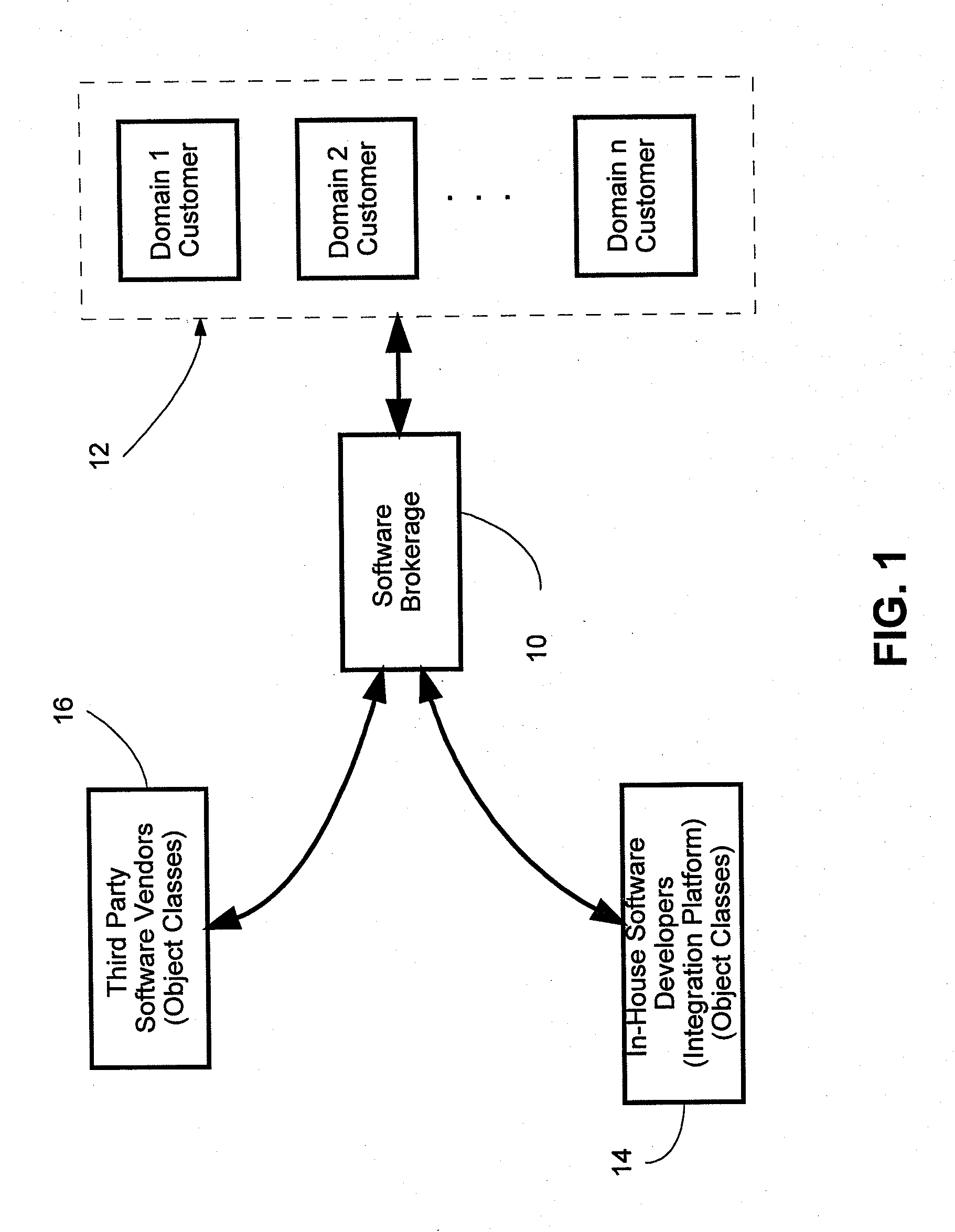Distributing and billing software according to customer use of program modules
a billing software and program module technology, applied in the field of billing software according to customer use of program modules, can solve the problems of users exceeding the scope of their licenses, high overhead costs for both software vendors and customers, and unable to meet the needs of specific customer needs, etc., and achieves the effect of facilitating flexible pricing
- Summary
- Abstract
- Description
- Claims
- Application Information
AI Technical Summary
Benefits of technology
Problems solved by technology
Method used
Image
Examples
Embodiment Construction
[0025]Turning now to FIG. 1, a schematic diagram depicts the basic components of an environment into which a new method for distributing, and billing for use of, software modules may be incorporated in accordance with the present invention. A software module is a data construct including at least an identifiable, integration-capable set of data and / or program instructions. An example of a software module is a data construct including an object class or set of classes from which objects are created and executed. Software modules may also include executables such as self-contained programs, dynamically linked libraries (DLLs), procedures, etc. The software modules include fields, described herein below, enabling tracking usage of the software modules at a customer site.
[0026]An “instance” is a copy of data and / or program code derived / copied from a software module. An example of an instance is an object created from an object class in a software module. Other examples of instances incl...
PUM
 Login to View More
Login to View More Abstract
Description
Claims
Application Information
 Login to View More
Login to View More - R&D
- Intellectual Property
- Life Sciences
- Materials
- Tech Scout
- Unparalleled Data Quality
- Higher Quality Content
- 60% Fewer Hallucinations
Browse by: Latest US Patents, China's latest patents, Technical Efficacy Thesaurus, Application Domain, Technology Topic, Popular Technical Reports.
© 2025 PatSnap. All rights reserved.Legal|Privacy policy|Modern Slavery Act Transparency Statement|Sitemap|About US| Contact US: help@patsnap.com



